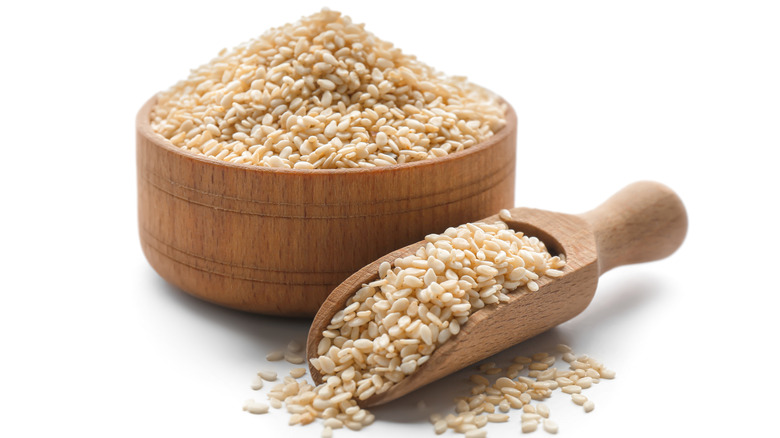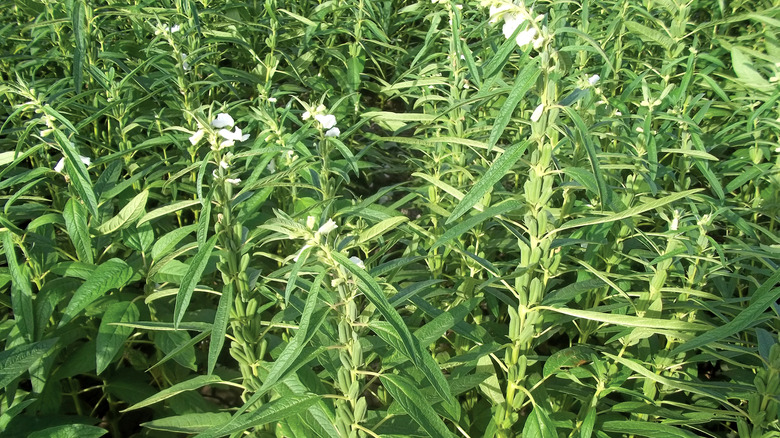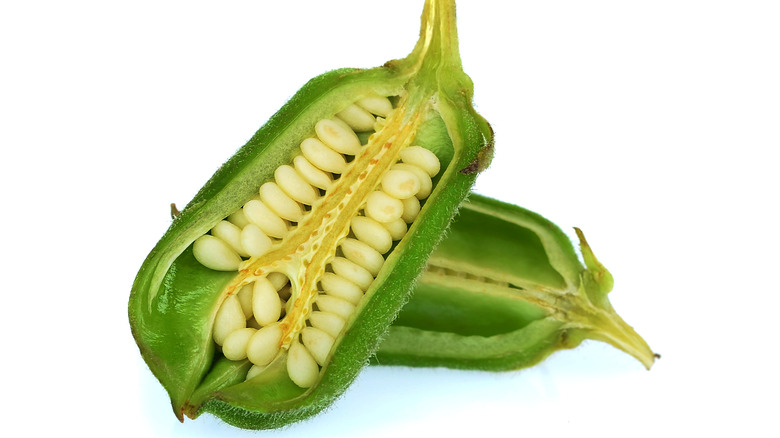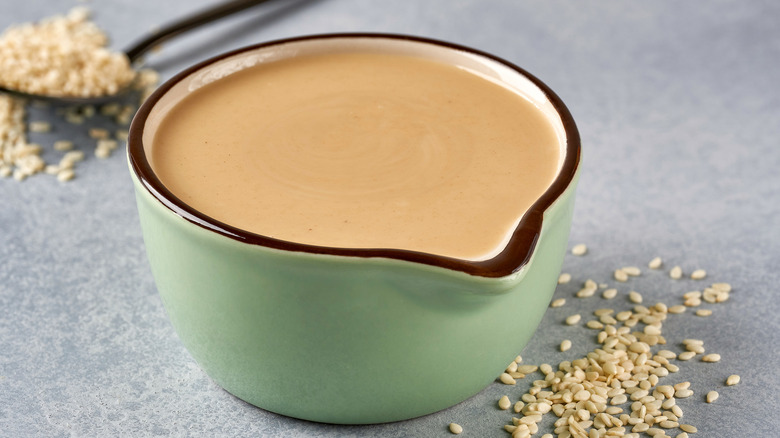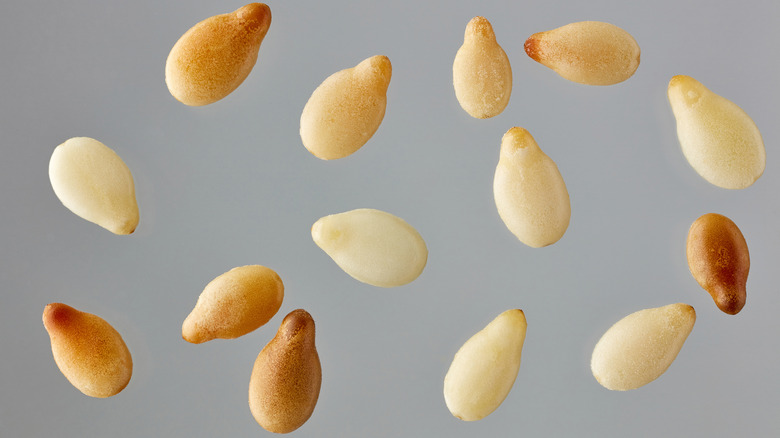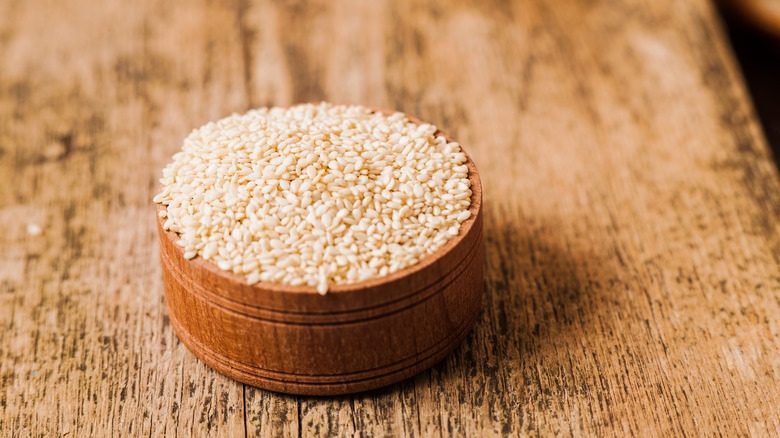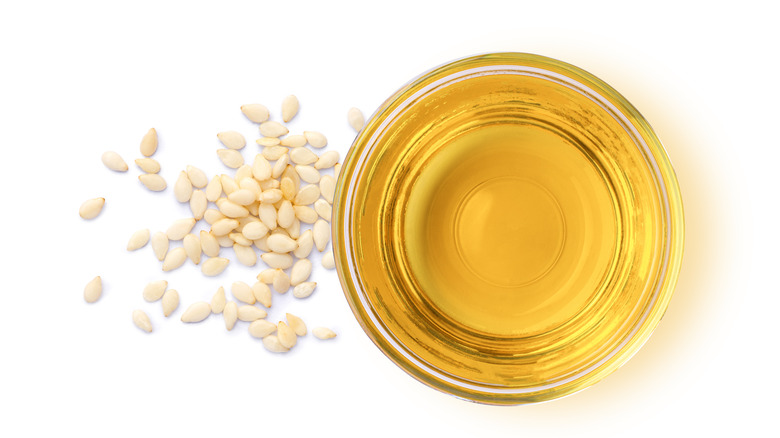What Are Sesame Seeds Really?
Sesame seeds — so small and ubiquitous that they're easy to overlook. Whether sprinkled on pastries, turned into oil, or ground into a paste, they add an indispensable quality to various dishes. With a low-key sweet and nutty taste accompanied by a satisfying crunch, their pleasant nature goes well with just about anything.
Humans have taken a liking to the seed for thousands of years. It's one of the most globalized ingredients, appearing in cuisines from the Americas to Africa, the Middle East, and Asia. Sweet or savory, pulverized into a sauce or as a textural component, or even served as a dessert soup, the full extent of this condiment is surprising.
Additionally, it may be challenging to picture how the seeds grow. In fact, they come from the inside of a fruit that sprouts on a tall, grass-like plant. Let's dive further into what this condiment is all about.
What are sesame seeds?
Sesame seeds are tiny kernels harvested from the fruit of the sesamum indicum and are the only edible part of the plant. They are small, typically only about 0.1 inches long, and very thin. In addition to the ubiquitous white sesame — as commonly spotted on a hamburger bun — red, brown, and black varieties also exist.
Sesame seeds can also be differentiated based on whether or not they're hulled. In the U.S., most seeds are sold without this outermost layer since it adds a bit of bitterness and textural density. However, elsewhere, both varieties are common.
Humans have long grown the sesame plant for its seeds. Originally native to Africa, this crop spread to Europe and Asia, where it has been grown for centuries. In fact, the Chinese have harvested sesame seeds for over 5,000 years, and records exist of both Ancient Egyptians and Romans using the plant. Despite such a storied legacy, many do not recognize how the plant is grown — let's dive into the specifics.
How do sesame seeds grow?
Human's storied affiliation with the plant is mainly due to sesame's hearty nature. It easily grows in dry and hot conditions, with resistance to droughts. The plant is a bright green and reaches a height of up to nine feet, depending on the variety. The sesame bush produces fruit pods that resemble okra, filled with edible seeds. Once mature, these pods burst, scattering the seed for proliferation.
Traditionally, gathering the sesame involved a labor-intensive harvest with a sickle. It used to be necessary to procure the seeds before they scattered, adding difficulty to the process. However, new breeds of sesame seeds, which don't explode, and newfound mechanization methods have eased the harvesting process. Once isolated, the sesame seeds are dried. During processing, great care must be taken to avoid contamination with sand and dirt and preserve the seed's hull. Additionally, its vital humidity is regulated, as the seeds will spoil if their moisture content surpasses 10%.
How are sesame seeds used in cooking?
Most commonly, sesame seeds are sold raw, with their hull removed. They can be eaten right out of the package, sprinkled atop noodle dishes, rice bowls, salads, or even used in mole sauce. However, to accentuate the sesame's nutty flavors, toast them in a skillet or the oven. Such a technique is often used when baking a pastry that contains sesame seeds, like lavash crackers, burger buns, and sesame cookies.
Another way to generate an intensified flavor is to reach for unhulled, darker-colored varieties. Their more potent flavor is useful for dishes where the sesame is more of a star component, like a black-sesame cake or Chinese dessert soup, which combines powdered black sesame with water and sweeteners.
Toasting is also necessary when creating sesame mixtures at home. For example, the Japanese tableside condiment Gomashio combines coarsely ground, unhulled sesame with salt in a mortar and pestle. The resultant mix can then be used as topping for rice bowls and onigiri.
How sesame seeds are processed
In addition to being utilized in their whole form, there are many processed versions of sesame. Middle Eastern, Mediterranean, and South Asian cuisines often reach for tahini, a paste reminiscent of a nut-butter. Tahini's taste reflects its sesame base — nutty and earthy, sometimes with a hint of bitterness. The product can be made from both hulled and unhulled, as well as toasted and raw sesame. Most famously used as an ingredient in hummus, tahini can also be used in desserts, dressings, and more.
Another application of the seeds is sesame oil. An essential component in Asian, especially Chinese cooking, this oil can also be found in both toasted and raw form. The darker the color, the more intensified the nutty flavor. Due to its expense and low smoking temperature, sesame oil is used as a seasoning instead of cooking oil. Throw it into dipping sauces, like for kimchi pancakes, or as a way to add flavor to stir-fries, noodle dishes, and more.
Nutrition of sesame seeds
Despite their small size, sesame seeds pack in nutritional qualities. They are a calorie-dense food, with one tablespoon containing just over fifty calories, per USDA. Plus, they're a great source of fiber, a compound necessary for digestive health and often deficient in the U.S. According to Healthline, three tablespoons of unhulled sesame seeds offer 12% of the daily requirement. And the seeds are also a source of protein, beneficial for vegetarians. To get the most protein per serving, opt for hulled seeds.
Sesame seeds also contain manganese and calcium, which improve bone health and regulate bodily processes like muscle movement and nerve transmission. Combined with the presence of lignans and phytosterols, which aid in lowering cholesterol, sprinkling a serving on top of a meal does offer some valuable health benefits. Just don't overdo too many sesame seeds in one sitting — their abundance of fiber may cause a blockage, notes WebMD.
Where to buy sesame seeds
Since they're popular in so many different cuisines, sesame seeds can be found at most grocers. If unavailable at the nearest store, seek out Middle Eastern, African, or Asian specialty markets, since they're used more frequently in these regions. Black sesame seeds can often be found at Asian grocers.
Unhulled sesame seeds may be more difficult to find, although they're becoming more popular at health-oriented grocers. It's also possible to buy them online. With both types of seeds, try to avoid bulk purchases to minimize spoilage. Inspect the seeds for debris, rocks, and discolorations before buying a batch. The best-tasting product will be uniform in shape and color, with no shriveled specimens.
How to store sesame seeds
Once purchased, package sesame seeds in an airtight vessel and keep them away from direct light. The condiment should last for up to three months in a cool location. To lengthen the storage time, place them in the fridge — in this setting, the seeds will be good for half a year. Sesame can also be frozen, but in this form, make sure to toast before use.
Processed sesame is even more stable. Plain, unopened sesame oil will last for a year after opening if placed in the fridge. Tahini is also an excellent method of preserving sesame flavor — the paste will last refrigerated for half a year.
